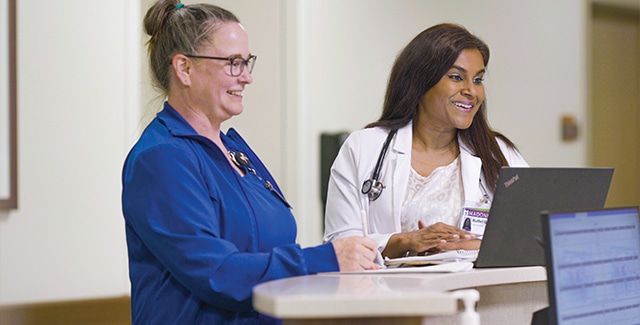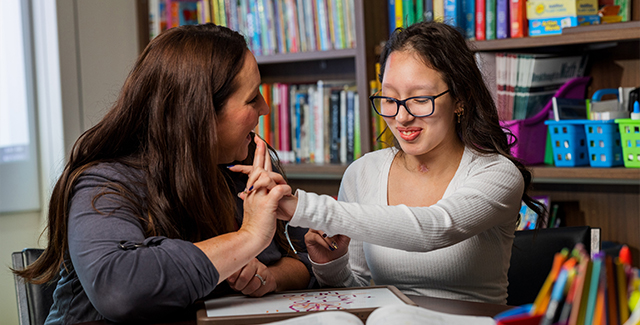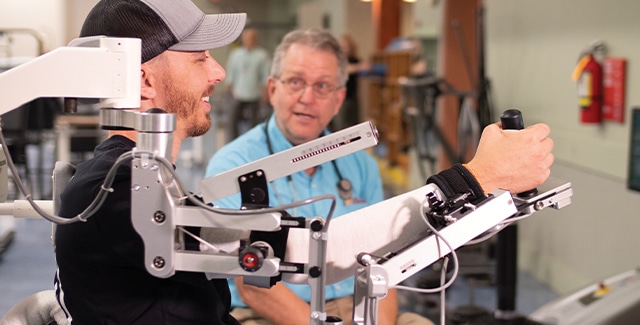Disorders of Consciousness (DoC)
What are Disorders of Consciousness?
Disorders of Consciousness (DoC) occur after severe brain injury, resulting in a patient being in a coma, a vegetative state, or a minimally conscious state. The behavioral signs associated with each level of DoC are described below. These responses can assist practitioners in identifying the patient’s level of DoC and tracking their progression along the DoC spectrum towards regaining consciousness. These behaviors can be observed at the bedside.
| Coma | Vegetative State | MCS- | MCS+ | Emergence |
|---|---|---|---|---|
| No eye-opening | Spontaneous eye opening | Visual fixation and pursuit | Consistent visual pursuit | Consistent following of commands |
| No response to painful stimuli | Generalized response to painful or noxious stimuli | Localized response to stimuli | Purposeful response to stimuli | Functional object use |
| Absent sleep/wake cycle | Return of sleep/wake cycle | Sleep/wake cycle | Sleep/wake cycle | Functional communication |
| Reflexive movement patterns | Spontaneous movements | Increased consistency of commands | ||
| Inconsistent command following | Intentional communication |
Frequently Asked Questions
Below are the most frequently asked questions we receive from families of loved ones who have experienced severe brain trauma.
Why should patients with DoC be referred to specialized rehabilitation?
- 80% of TBI patients experiencing DoC will emerge into consciousness during inpatient rehabilitation (Kowaski et al, 2021).
- 70% of all severe brain injury deaths are due to the withdrawal of life-sustaining treatment
(Turgeon et al., 2011). - Decreases the risk of medical and secondary complications and promotes patients’ arousal and responsiveness through pharmacological and rehabilitation interventions.
What is the goal of specialized rehabilitation for DoC?
Multiple goals are the focus of the rehabilitation program implemented for DoC, including:
- Increase arousal and awareness
- Improve participation and communication with the patient
- Improve feeding and swallowing
- Objectively assess and identify improvement in consciousness
- Continue with medical stabilization
- Improve the function and quality of life for the patient and family
- Family training to prepare for home
- Decrease the risk and incidence of medical complications
- Discharge to the community
What rehabilitation interventions can be implemented with patients in DoC?
- Serial behavioral assessments
- Management of complications
- Communication
- Family education
- Intensive mobilization
- Tracheostomy decannulation
- Assistive technology use
- Home assessment
- Intensive sensory stimulation
- Early feeding/swallowing
- Seating/positioning for function
- Family training for home discharge
What level of post-acute care is appropriate for survivors of brain injury
experiencing DoC?
Our specialty brain injury rehabilitation program and DoC care transcend levels of care. Our Specialty Hospital serves those with DoC experiencing continued medical complexities, including ventilator needs. Inpatient rehabilitation will focus on continued medical stability and increased intensity of rehabilitation interventions as listed above. Multiple levels of the post-acute care continuum allow flexibility when working with various private and public reimbursement resources.
Can patients with DoC be discharged to home and community?
Yes, that is a goal of medical rehabilitation. Interventions include intensive family training to prepare them to take their loved one home, even if they are still demonstrating DoC behaviors. Our DoC population has a 79% discharge to home rate.
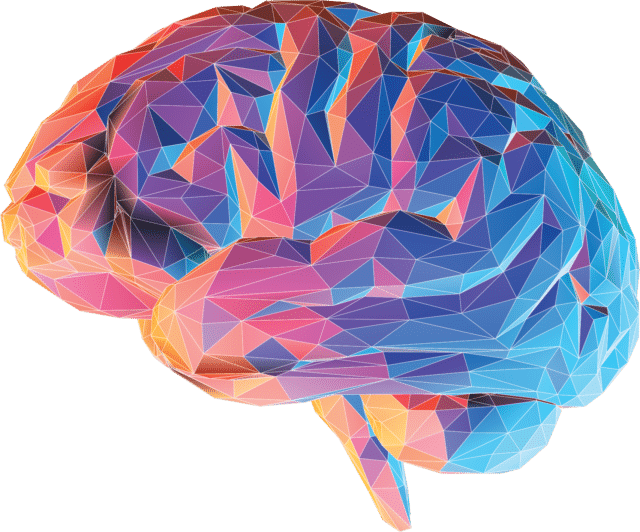
Ask the Experts
Will They Wake Up?
Positive Signs of Recovery
Can Therapy Wake Them Up?
Long-term Prognosis
Will They Always be in DoC?
Can I Take Them Home?
Treatments You Can Do When They Can’t Participate
Long-term Resources
REFERENCES
Giacino, J., et. Al. (2018). Practice guideline update recommendations summary: Disorders of Consciousness. Neurology, 00: 1-11. Doi: 10.1212/WNL.00000000005926.
Turgeon, A., et al. (2011). Mortality associated with withdrawal of life-sustaining treatment for patients with severe brain injury: a multi-center cohort study. CMAJ; DOI: 10. 1503/cmaj.101786.
Kowalski, R. et. Al. (2021). Recovery of consciousness and functional outcome in moderate and severe traumatic brain injury. JAMA Neurology; 78(5):548-557. doi:10.1001/jamaneurol.2021.0084
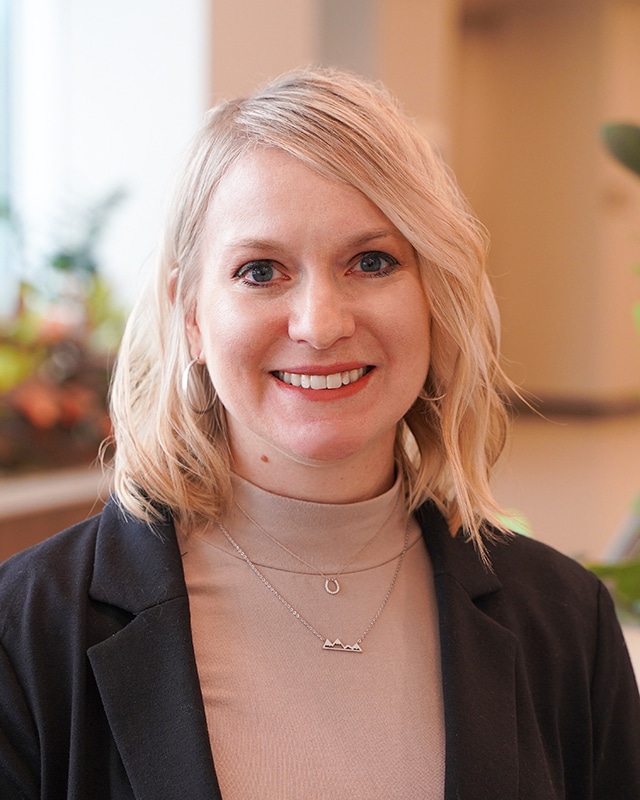
Meet our Disorders of Consciousness Program Manager
Brooke Murtaugh, OTD, OTR/L, CBIST, BT-C, is an occupational therapist with over 20 years of brain injury and burn rehabilitation expertise. Since 2006, she has specialized in treating burn survivors and individuals with severe traumatic brain injuries, particularly those with disorders of consciousness (DoC), at Madonna Rehabilitation Hospitals.
As Madonna’s brain injury program manager and burn program leader, Brooke is dedicated to advancing rehabilitation care. She has presented at major events like World Coma Day 2022 and the IBIA World Congress on Brain Injury 2023, sharing global best practices. A Certified Brain Injury Specialist and National Trainer, she is a recognized leader in the field.
Additionally, Brooke was recently appointed lead author for the rehabilitation section of the Trauma Quality Improvement Program (TQIP) for the American College of Surgeons, highlighting her influence in shaping care standards. She also serves on CARF’s Disorders of Consciousness panel, helping establish new care standards for patients with severe brain injuries.

